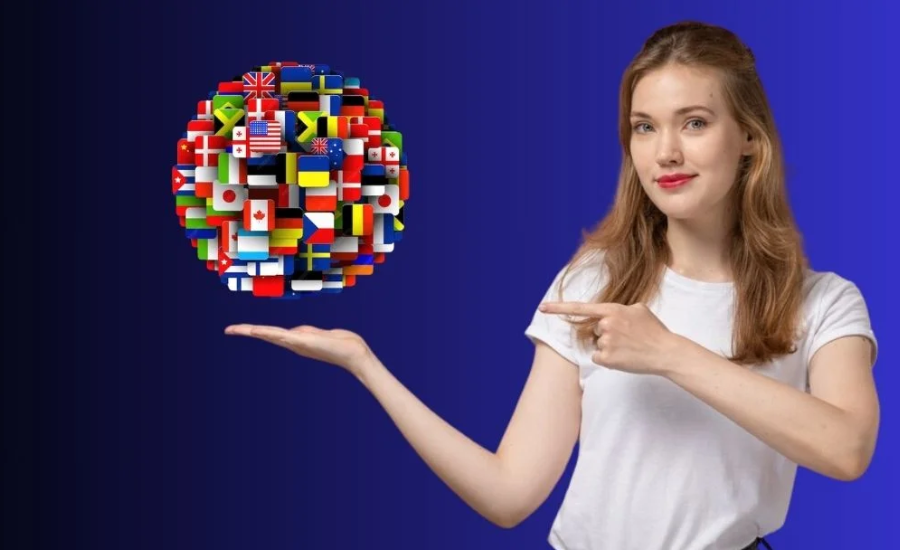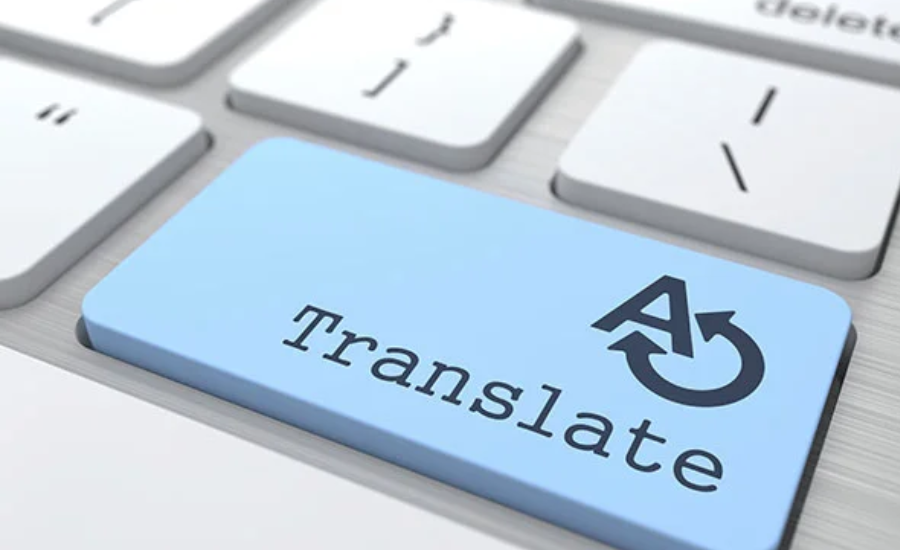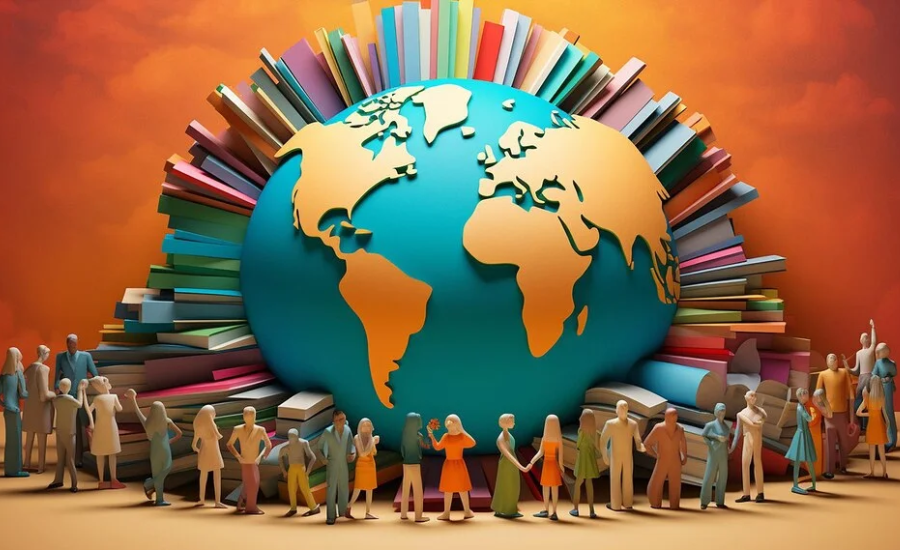In the diverse realm of human communication, where language differences can create obstacles, the role of “Käöäntäjä” becomes essential. This concept highlights the importance of translation as a tool for bridging gaps between people, enabling effective dialogue, and building meaningful relationships across various cultures. Through translation, individuals can overcome the limitations imposed by language barriers, allowing for a more inclusive and interconnected global society.
Translation not only facilitates the exchange of ideas but also plays a pivotal role in promoting mutual understanding and cooperation. By transcending linguistic divides, “Käöäntäjä” ensures that communication is seamless and that diverse voices are heard and appreciated. This process is vital for nurturing relationships, fostering collaboration, and creating a more cohesive world where information and cultural exchange thrive.
The Art and Science of “Käöäntäjä”

The concept of “Käöäntäjä” fundamentally represents the intricate blend of art and science involved in translating between languages. It goes beyond mere word-for-word conversion to encompass the deep understanding of subtleties, cultural contexts, and emotional undertones that are integral to effective communication. The term “Käöäntäjä,” derived from Finnish, signifies “translator” and highlights the essential role translation plays in connecting diverse linguistic communities.
In essence, “Käöäntäjä” captures the complexity of rendering one language into another while preserving the intended meaning and cultural richness. It underscores the translator’s ability to navigate the subtle intricacies of language, ensuring that messages are conveyed with accuracy and sensitivity. This role is crucial in facilitating cross-cultural exchanges and maintaining the integrity of both the source and target languages.
Furthermore, “Käöäntäjä” illustrates the universal significance of translation as a means of bridging communication gaps. It exemplifies how translators serve as essential intermediaries, fostering understanding and collaboration across different cultures. By preserving the depth and context of the original message, translation enriches global interactions and enhances our ability to connect with people from various backgrounds.
The Evolution of Translation: From Ancient Practices to Modern Technological Advancements
Translation has undergone profound transformations from the days of ancient civilizations to the present era. Early translators played a crucial role in connecting diverse cultures, facilitating trade, diplomacy, and the exchange of knowledge. Notably, the Silk Road was instrumental in this process, serving as a conduit for translating texts between Eastern and Western societies, which significantly contributed to mutual understanding and technological progress.
In the modern era, the field of “Käöäntäjä” has expanded to include sophisticated machine translation technologies. These advancements have revolutionized how we access and process information by making real-time communication across different languages more efficient and accessible. As a result, global collaboration has become more seamless, allowing people from various linguistic backgrounds to work together more effectively.
Despite these advancements, the evolution of translation technology introduces new challenges and complexities. Although machine translation provides significant advantages, it also faces challenges in preserving accuracy and capturing contextual subtleties. As technology continues to advance, addressing these challenges will be essential for ensuring that translation remains a reliable and effective tool for bridging linguistic and cultural divides.
Navigating the Challenges of Translation

The function of “Käöäntäjä” in translation involves various challenges that affect both the precision and efficacy of the process. One significant hurdle is the complexity of contextual nuances, idiomatic expressions, and cultural subtleties, which can complicate the translation of meanings from one language to another. The issue of “untranslatability” underscores this challenge, revealing how certain terms and phrases may lack direct counterparts in other languages, making it difficult to convey their full meaning.
Translators must carefully manage the delicate task of maintaining the original text’s integrity while ensuring that the translated content resonates with and is comprehensible to the target audience. This process requires not only advanced linguistic skills but also a deep understanding of cultural contexts and subject matter expertise to ensure that translations are both accurate and relevant.
The intricacies of translation demand a sophisticated approach, combining technical proficiency with cultural awareness. Successful translators must navigate these complexities to deliver translations that honor the original material’s essence while meeting the needs and expectations of the target audience. This nuanced process highlights the essential role of expertise in overcoming the barriers inherent in language translation.
The Role of Technology in Modern Translation
In today’s digital era, technology significantly enhances translation capabilities. Advances in machine learning algorithms and neural networks have revolutionized the field of “Käöäntäjä,” providing tools that deliver faster and more precise translations. Neural machine translation, a standout among these advancements, utilizes deep learning methods to analyze extensive language datasets, leading to improvements in translation quality and efficiency.
Limitations of Machine Translation
Even with these technological advancements, machine translation still faces its own set of challenges. Algorithms can encounter difficulties with ambiguous language, context-dependent meanings, and the creative subtleties that characterize human communication. These limitations highlight the areas where technology may fall short, particularly when dealing with complex or nuanced text that requires a deep understanding of cultural and contextual factors.
The Continuing Importance of Human Expertise

Given these limitations, the role of human expertise remains crucial in translation. Skilled translators are essential for addressing the intricacies and subtleties that machines may overlook, ensuring that translations are both accurate and culturally sensitive. This expertise is particularly vital in fields that demand high precision and a nuanced grasp of language, underscoring the complementary role of human translators alongside technological tools.
The Multifaceted Impact of Translation Across Key Sectors
Translation, encapsulated by the term “Käöäntäjä,” plays a critical role in various sectors, adapting to the specific needs of each field. In the business sector, translation is pivotal for global commerce. It allows companies to tailor their products and marketing strategies to different regional markets, ensuring that communication with customers, partners, and stakeholders is effective. This localization helps build trust and drive business success internationally, as businesses can better connect with their audiences in their native languages.
Enhancing Healthcare Access Through Translation
In healthcare, translation is essential for ensuring that diverse populations receive equitable access to medical services. Medical interpreters bridge the communication gap between healthcare providers and patients who may not speak the dominant language. This role is crucial for accurate diagnoses, effective treatment, and securing informed consent. By facilitating clear communication, translation helps maintain high standards of care and supports patient understanding in a multilingual context.
The Role of Translation in the Legal Domain
The legal field also heavily relies on translation to uphold justice and ensure fair treatment for individuals from various linguistic backgrounds. Legal translators and interpreters are instrumental in bridging language barriers in court proceedings, contract negotiations, and legal documentation. Their work ensures that all parties involved comprehend their rights, responsibilities, and legal procedures, which is fundamental for maintaining the integrity of the legal system.
Bridging Cultures in the Entertainment Industry

In the realm of entertainment, translation enables the global reach of cultural products, including films, television shows, and literature. Through services such as subtitling, dubbing, and localization, media content becomes accessible to audiences worldwide. This not only broadens the market for creative works but also promotes cross-cultural exchange and appreciation of different artistic traditions, enriching the global entertainment landscape.
The Broad Impact of Translation
Overall, translation’s influence reaches well beyond just converting languages. It facilitates global commerce, enhances healthcare accessibility, ensures legal fairness, and supports cultural exchange in entertainment. By addressing the unique needs of each sector, translation helps bridge gaps between languages and cultures, fostering a more interconnected and inclusive world.
Enhancing Global Connections Through Translation
The role of “Käöäntäjä” in overcoming language barriers is crucial for fostering empathy, understanding, and collaboration worldwide. By enabling individuals to communicate and exchange ideas across different languages, translation helps to bridge gaps between diverse perspectives. This enhanced ability to connect enriches human interactions and contributes significantly to a more inclusive and understanding global community.
Don’t Miss Out—Read Now: Andrigolitis
The Importance of Translation in Addressing Global Challenges
In our interconnected world, effective cross-language communication is vital for tackling global issues and fostering peaceful relations. Translation supports the resolution of complex challenges by facilitating clear dialogue and cooperation among individuals from various linguistic and cultural backgrounds. This process not only promotes peace but also helps build societies that are more inclusive and connected.
Interesting Facts
- Essential Role of Translation: The concept of “Käöäntäjä” emphasizes the importance of translation in overcoming language barriers, which is crucial for enabling effective dialogue and building relationships across different cultures.
- Global Connectivity: Translation fosters global connections by allowing people to exchange ideas and appreciate diverse perspectives, contributing to a more interconnected and inclusive world.
- Art and Science of Translation: “Käöäntäjä” represents the intricate blend of art and science in translation, involving not just the literal conversion of words but also the understanding of cultural contexts and emotional nuances.
- Historical Evolution: Translation has evolved significantly from ancient practices to modern technology, with early translators facilitating cultural exchanges and technological advancements now enhancing translation efficiency.
- Technological Impact: Modern translation technology, including machine learning and neural networks, has improved translation speed and accuracy, though it still faces challenges with context and nuance.
- Challenges in Translation: Key challenges include contextual nuances, idiomatic expressions, and cultural subtleties. The notion of “untranslatability” underscores the challenges in fully capturing the meaning of specific terms and expressions.
- Sector-Specific Applications: Translation is vital in various sectors including business, healthcare, legal, and entertainment. Each sector relies on translation to address its unique needs, from global commerce to equitable healthcare access.
- Human Expertise: Despite technological advancements, human expertise remains essential in translation for maintaining accuracy and cultural sensitivity, particularly in complex and nuanced contexts.
FAQs
Q1. What is “Käöäntäjä”?
A. “Käöäntäjä” is a Finnish term for “translator,” representing the art and science of translating languages and bridging cultural gaps.
Q2. How does translation enhance global communication?
A. Translation facilitates effective dialogue and relationships across cultures, allowing for idea exchange and fostering a more interconnected world.
Q3. What challenges are associated with translation?
A. Key challenges include handling contextual nuances, idiomatic expressions, and cultural subtleties, as well as the concept of “untranslatability.”
Q4. How has translation evolved over time?
A. Translation has progressed from early practices facilitating cultural exchange to modern technology that enhances efficiency and accuracy.
Q5. What role does technology play in translation today?
A. Modern translation technology, such as machine learning and neural networks, improves translation speed and accuracy but still faces challenges with context and nuance.
Q6. Why is human expertise important in translation?
A. Human expertise is crucial for maintaining accuracy and cultural sensitivity, especially in complex and nuanced translation contexts.
Conclusion
Translation, embodied by the concept of “Käöäntäjä,” is a vital tool for bridging language and cultural gaps. It enhances global communication, supports various sectors including business, healthcare, legal, and entertainment, and facilitates cross-cultural understanding. While technology has significantly advanced translation capabilities, human expertise remains essential for handling complex nuances and ensuring cultural sensitivity. Overall, translation fosters a more connected and inclusive world, addressing global challenges and promoting mutual cooperation.
Stay engaged for the latest news and alerts: Incredible Wave

